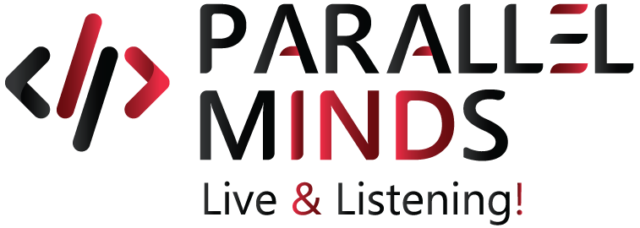Global Complaint Management System (GCMS): Tech-Enabled and Across Borders
In an optimally interconnected world where the existence of borders can no longer be used as an excuse for customer service and redressal delays, a Global Complaint Management System (GCMS) enables a business to access and act upon an entire complaint management system for their global clientele.
Maintaining a steady customer relationship by never allowing physical distances to come in the way of client satisfaction, protecting brand reputation through prompt redressal, or even ensuring that the brand follows all regulatory compliances across different regions, a dependable GCMS delivers solutions to satisfy every norm.
Global Complaint Management System (GCMS): A Quick Intro
Global Complaint Management System (GCMS): A centralized software platform with access to all associated business processes, a GCMS equips a business with the ability to receive complaints, track and analyze their progress, and resolve them from an existing worldwide customer base in a well-planned, consistent, and optimal manner.
A GCMS covers a wider range of services and is not restricted to product defects alone. It encompasses the entire spectrum, from service complaints and billing issues to ethical grievances and concerns on social media.
Since it is a global platform, a dependable GCMS must be built to withstand challenges such as multiple languages, and wide-ranging regulatory and consumer protection laws across different markets and deliver accordingly.
Where Traditional Approaches Fall Short
When going global, companies sometimes continue to rely on their traditional complaint management systems and believe a fragmented approach works best. Here’s where this entire plan goes wrong:
Isolated Communication and Knowledge Reservoirs: In the case of a complaint management system, the communication reservoir built over time is an invaluable resource that helps a business access information. With the traditional, broken-down approach, local email inboxes, spreadsheets, and desktop systems carry isolated bits of info and fail to gain knowledge from the existing information and patterns that exist with the help of cross-regional visibility.
Inconsistency in Complaint Handling: Teams working from different countries and regions handling the same kind of complaints in myriad ways lead to variable customer experiences and unpredictable customer satisfaction metrics.
Risk of Non-Compliance: In a global market, consumer protection laws, compliance, and other regulatory nuances vary. In the absence of a centralized system, there’s a constant risk of non-compliance and subsequent fines where regulatory oversights caused by isolated environments cause potentially risky blind spots.
Missing Out on Valuable Data Insights: Customer complaints hold invaluable knowledge chunks to help a business improve. From product irregularities and service bottlenecks to competitive comparisons and emerging demands, there’s so much to learn. A siloed approach takes away this advantage and prevents a business from accessing valuable insights.
Centralized Cloud-Based GCMS: Essential Features of a Global Business Solution
Multichannel Intake: Web forms on a business site offer secure, customized forms for easy complaints. Dedicated email addresses with functions like automated forwarding are part of the system as soon as a complaint is received. Integrated call center systems with the ability to log in call details manually for documentation. And social media monitoring to extract actionable case studies and concerns. All these elements come together to form a multichannel intake platform.
Centralized Case Management: Efficient complaint categorization allows for a clear tagging and classification exercise to keep track of different classes of complaints. An automated system enables the escalation of urgent complaints and issues while just as efficiently diverting others to relevant teams and processes. Assignment protocol based on set rules allows for optimal distribution based on issue, region, department, or product. Timely alerts keep stakeholders updated on the progress and resolution status through various stages.
Workflow Automation: Standard procedures make for customizable, well-planned workflows for every complaint type and enable teams to follow clear procedures for their prompt and efficient resolution. Knowledge-based aggregation allows teams to access relevant information sought from past complaints and similar resolutions. Automatic response templates introduce consistency to communication and provide complainants with quick acknowledgment receipts, and updates. They also help set up a systematic flow of information.
Security and Accessibility: Role-based access codes offer better control based on different employee levels. A cloud-based security system allows for anywhere access while following proper protocol via secure authorization, eventually assisting enhanced collaboration. The data encryption protocol adheres to strict data protection regulations, allowing businesses to function smoothly in various regions while meeting their security requirements efficiently.
Data Analytics and Reporting: Customizable dashboards offer real-time peeks into complaint numbers, trends, average resolution windows, and other statistics with a parameter-wise breakdown. AI and machine learning enable pattern identification to resolve complaints more efficiently and with minimal resource expenditure. Automated regulatory compliance reports sent out to relevant agencies ensure responsiveness while following regulatory laws. Finally, with the help of sentiment analysis, responses to complaints can now gauge dissatisfaction and work out resolutions and communications accordingly.
Advantages of a GCMS
Elevated Levels of Customer Satisfaction: Customers who have already had a negative experience with a product greatly appreciate quick and effective communication and resolution. A dependable GCMS helps your business deliver an optimal complaint resolution process that boosts customer loyalty.
Instead of generic responses, a GCMS provides high levels of personalization so that support representatives and even automated responses can offer tailored responses and resolutions depending on the existing complaint history. This makes a customer feel valued.
Even in the case of an unhappy customer, responsiveness and dedicated resolution show that a company is willing to accept its shortcomings and spend its resources on making up for them. This can convert even a disgruntled customer.
Robust Regulatory Compliance: A GCMS enables customized alignment with compliance frameworks and helps a business meet specific industry regulations concerning complaint management, resolution timelines, and other similar parameters.
In the case of inquiries from a regulatory agency, a GCMS can present detailed records and create a defensible audit trail with proper outlines of every complaint lifecycle.
Most importantly, a GCMS maintains international standards in terms of compliance and regulations, even in regions where robust laws are still in the formation stages. This ensures that the business follows an ethical path, irrespective of region or country.
Proactive Quality Control: With single complaints, it becomes difficult to identify a pattern. However, when analytics tools in a GCMS study the magnitude of complaints, they can detect a pattern that comes in handy when hunting down a permanent resolution.
Targeting root causes and introducing improvements results in preemptive action that prevents further complaints, reduces warranty and service costs, and, in extreme scenarios, prevents product recalls and lost clientele.
Complaints also include suggestions for improvements and requests for new features. Accessing this information with the help of a GCMS enables a business to introduce new product developments and leverage the advantage of firsthand information from its customer base.
Data-Driven Actions: While sales and operational data offer their share of information, data retrieved from customer complaints gives deeper insights into product preferences, pain points, competitive comparisons, and other parameters. A GCMS enables the accumulation of all these relevant data points.
A GCMS also maps disproportionate complaints that flag a particularly troublesome product line, enabling a business to halt production until existing glitches in quality or operations are resolved through R&D or testing.
GCMS solutions also process the varying sentiments behind customer complaints, gauging their intensity and highlighting specific complaints for personal communication and resolution. This helps customer service teams identify special cases and provide resolutions accordingly.
Brand Protection: A GCMS serves as an early warning system by highlighting negative emotions in complaints, monitoring social media reactions, and providing an overview of customer behavior. This enables a business to provide quick resolutions and introduce damage-control measures when an incident threatens to go viral.
As a centralized source of information, a GCMS can also identify misinformation and highlight inaccurate news or complaints on the internet. A business can then contribute to the narrative and set the record straight before serious damage is done.
Finally, proactive complaint resolutions and elevated levels of customer service enable a business to tackle criticism with positivity and counter market negativity in time. This reputation management method is respectable and ethical.
GCMS: The Parallel Minds Approach
At Parallel Minds, we are prepared to make the existing Global Complaint Management System framework even more robust and future-ready. Whether it is omnichannel complaint submissions via voice chats or chatbots, AI-powered classification and routing of complaints, or the use of AI models to predict market trends and issues, our teams are already preparing for the future. With us on your side, you can always depend on a robust GCMS solution, without any room for complaints!
Share:
More Posts

Value Stream Mapping – Current and Future States
If you’ve ever witnessed a brilliant idea with the potential to develop into a successful

The Digital Evolution of a Lean Manufacturing Ecosystem: The Turnaround from Waste to Profit
As leaders in the tech space, we owe it to our respective industries to revolutionize

